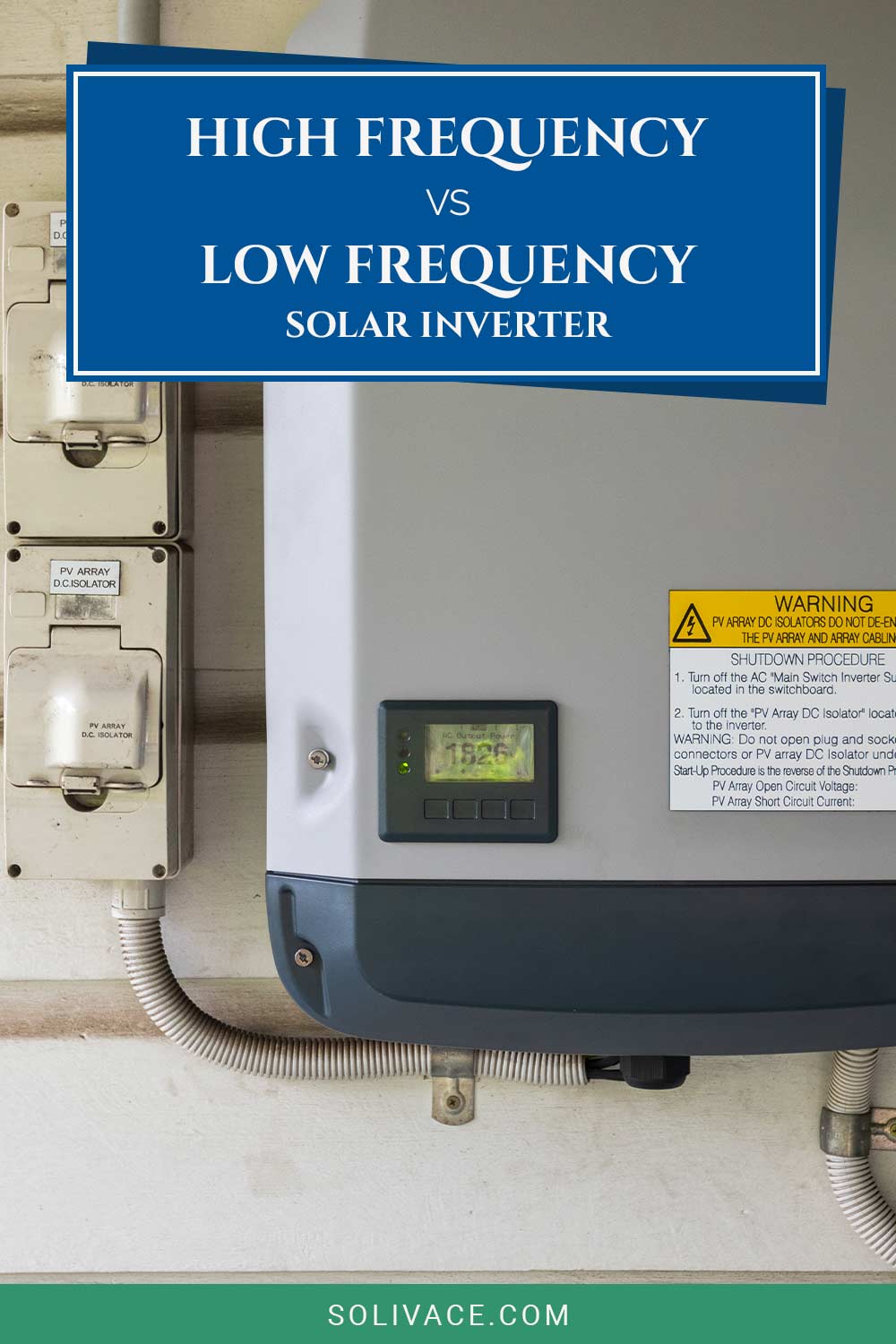High Frequency vs. Low Frequency Solar Inverters
We may earn commissions for purchases made through links on our site. Learn more on our about us page.
To shed some light on the frequencies in which we are talking about, this is not the power output frequency (Hertz).
Think more along the lines of changing voltages. High-Frequency inverters will be a good choice for those needing to increase a low-voltage direct current into a higher active current for appliances and similar equipment.
Low-frequency inverters are better suited for feeding batteries, taking A/C flows, and converting them to storable direct current. They can also keep one working through power spikes, such as when a vacuum or high starting-power use items get turned on.

What are the Differences?
The majority of the differences stem from how to utilize these two different types of inverters. Consider this, when using the low-frequency inverter in a solar panel system, the best place for the hardware will be to feed the batteries with low-impact direct current electricity.
The Converter directly from the solar panels, or when pulled out of battery storage, will be when the high-frequency inverter is best placed.
This piece of hardware will take the low-voltage direct current and boost it to create high voltages for household uses, such as when a homeowner is doing laundry and needs the washers and dryers.
What are the Similarities?
These two frequencies deal with electricity and also voltages, not hertz.
When it comes to the low-frequency, it can be fed directly from the solar panels, or in more complex systems need to coordinate with the solar converter equipment, similar to the high-frequency inverter that waits to ramp up the current voltage for household usage.
These specialized converters are only available in solar panel energy collection stations and systems. Each is going to be designed to work with the low voltages that come from the panels, creating the currents needed in storage and usage.
Pros and Cons: High Frequency vs. Low Frequency
The cons of the higher frequency inverters will be their inability to last when higher spikes in power usage occur, preferring to auto shut off to prevent damage to the system after a few seconds.
On the other hand, the pro will be the efficiency with which these pieces of hardware convert D/C to usable A/C electric flows.
The pro for low-frequency inverters will be their super ability to handle every sort of power usage, having capabilities that allow the hardware to handle power spikes for longer periods of time than a high-frequency inverter.
The con could be the low performance of technology because of the lower trickling current flows.
Which One is More Common?
When it comes to these two types of inverters, there is going to be an edge for the lower-frequency inverters.
This is because the simplest of battery charging and power-storing solar panel systems will have only low-frequency inverters in place to convert the photonic energy into a direct current perfect for battery storage.
High-frequency inverters will be placed in household systems or solar panel power stations used for buildings and are needed to ramp up the voltage of the current coming from the batteries.
Overall, the lower frequency inverters will be a more common sight when observing solar panel power stations.
Which One is More Efficient?
When it comes to the efficiency of these two systems, consider the metaphor of the Tortoise and the Hare. The Hare might be fast out the gate but burns out quickly, while the slow and steady Tortoise will make it to the finish line every time.
The high-frequency inverters will have essential components for the systems that need to be able to convert solar power for immediate usage.
But when it comes to power spikes, these pieces of hardware have failsafe auto shutdown processes to prevent damage to the battery systems.
Low-frequency inverters will take the low voltage current from the panels, and even when the sun is intense, and there are spikes in the system, there is a minimal power loss and a sense of reliability when it comes to these styles of converters.
Final Thoughts on High-Frequency vs. Low-Frequency Solar Inverters
Each time there is a flux in the power grid, these low-frequency inverters will take control of the flow, and most household systems will have the high-frequency inverter cut the circuit protecting the house and other power grid components from damage.
Having both of these pieces of equipment will protect your house but also allow for more flexibility when it comes to utilizing these systems and getting the most out of the solar power production stations.
In the end, having a conversation with a solar energy expert or electrician will reveal any in-depth questions that might confront you on your solar-powered journey into the future.



Leave a Reply
You must be logged in to post a comment.